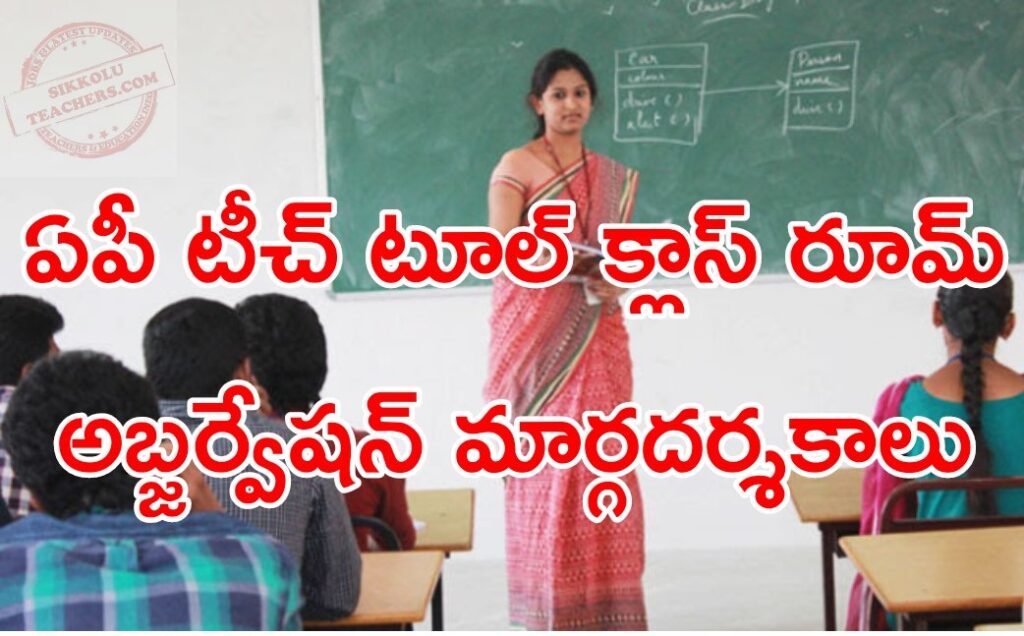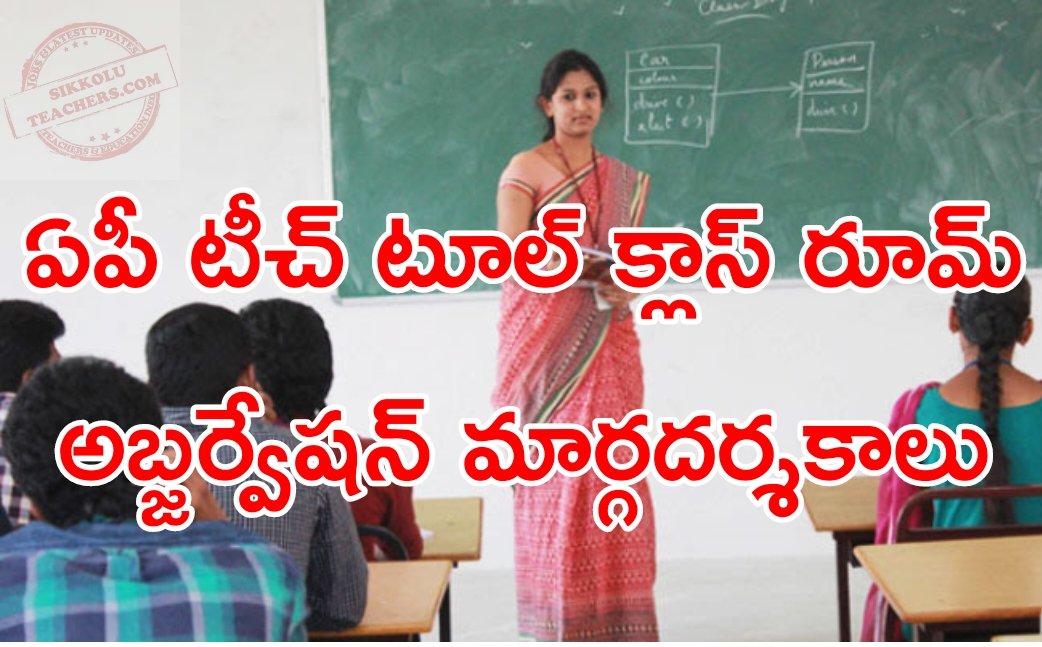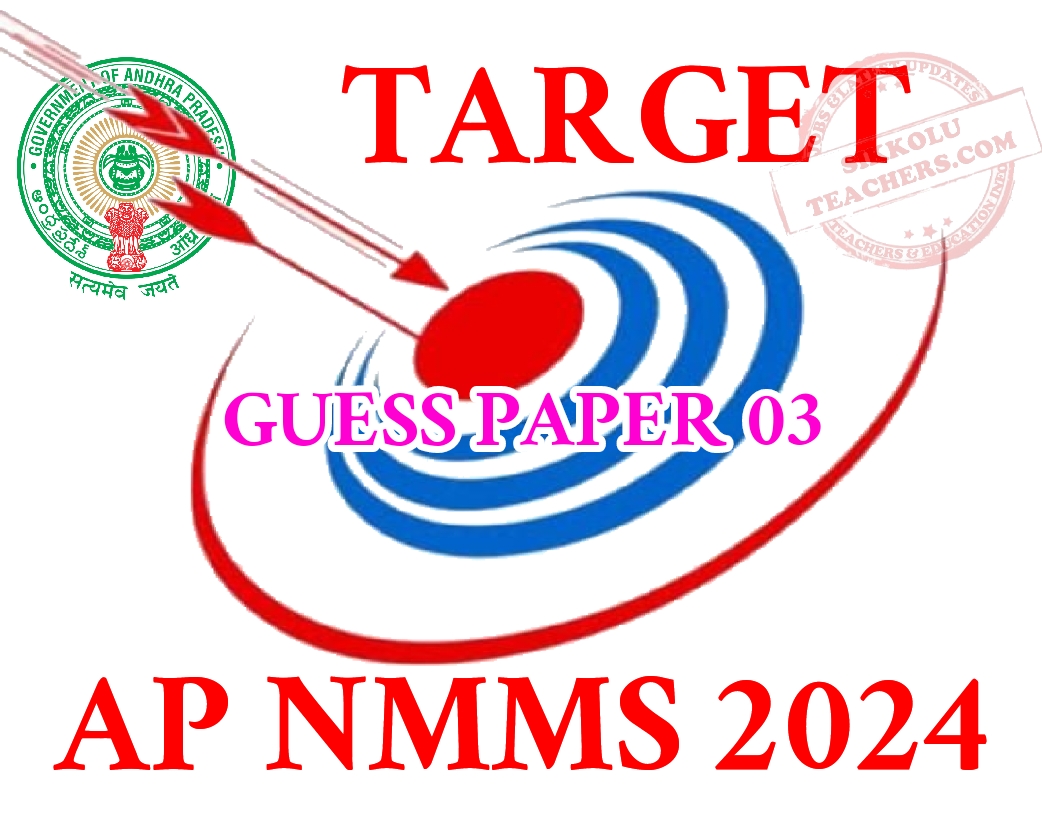AP SALT Teach Tool Classroom Observation Action Plan, Timeline, Instructions 2023-24 AP Samagra Shiksha – Supporting Andhra’s Learning Transformation (SALT) Teach Tool classroom observations for the academic year 2023-24 instructions Issued

School Education, AP – Samagra Shiksha – Supporting Andhra’s – Learning Transformation (SALT) – Teach Tool classroom observations for the academic year 2023-24 – instructions – Issued Rc.No.SS-15021/15/2022-SAMO-SSA, Dated:- 06/11/2023
Ref:-
1. Procgs.Rc.No.ESE02/173/2022-SCERT, dt.28/06/2022 of this office.
2. Rc.No.ESE02/547/2022-SCERT, dt.22/07/2022 of this office.
3. Rc.No.ESE02-22/53/2022-SCERT, dt.19/11/2022 of this office.
4. Rc.No.ESE02-22/53/2022-SAMO-SSA, dt.03/02/2022 of this office.
The District Educational Officers and the Additional Project Coordinators of Samagra Shiksha in the State are aware that the Department of School Education, in collaboration with the World Bank, is implementing the Supporting Andhra’s Learning Transformation (SALT) program to enhance the quality of education. One of the key goals of SALT is to improve teaching practices, which will be evaluated using the standardized classroom observation tool known as the TEACH Tool. This initiative aims to provide consistent classroom support to teachers through trained mentors using the TEACH tool. The Teach Tool implementation started in the academic year 2022-23.
In the previous academic year, a mobile application was developed to facilitate classroom observations. SCERT has trained 6600 observers on the TEACH tool in two phases, including Cluster Reserved Mobile Teachers, Upper Primary HMs, High School HMs, and Complex HMs. These observers underwent a rigorous 9-day training program followed by an examination that certifIed them as TEACH tool observers. Last year, 48,000 observations were conducted based on an initial baseline of 10,000 teachers.
The mapping of teachers to the observers across the State in the Teach Tool app has been completed for the second year of implementation. An online orientation is scheduled on November 7th, 2023 from 10.30 am to 12.30 pm to sensitize the observers. The detailed timeline is as follows:

Therefore, all the District Educational Officers and the Additional Project Coordinators of Samagra Shiksha in the State are requested to communicate the enclosed guidelines to all schools in their respective districts to facilitate the implementation of the Teach Tool during the academic year 2023-24 for conducting classroom observations.
Encls: – Action plan for Tech Tool classroom observations – 2023 – 24
Action plan for Tech Tool classroom observations – 2023 – 24
Background
- The Honourable Chief Minister of Andhra Pradesh has a vision of improving the overall learning outcomes of all students in the State, a first step towards this was the flagship Mana Badi – Nadu Nedu program which has been successful in transforming the school infrastructure in the state, thus creating a conducive learning environment in the state. Several initiatives are now being implemented to bring this change within our classrooms and transform the quality of teacher-student interaction in classrooms of Andhra Pradesh.
- In view of the above goal, it is important to consider that many recent reports like ASER, 2022, State Level Achievement Survey,2022 indicate low levels of performance in academics among children of age 5-16 in Andhra Pradesh. Except for English, students’ performance in different subjects across the grades is low (36-51%) and below the national average as per 2021 NAS report. Reading, Comprehension, and Math have been particularly challenging and below the optimal level of proficiency for the required grade level.
- At the same time, the government of Andhra Pradesh has conducted several trainings for teachers in the past few years. However, as per the Teacher Needs assessment conducted by SCERT in December 2021, teachers expressed the need for classroom level support to implement the strategies they learns in these training sessions.
- Aligned to the above stated needs of teachers, the National Education Policy states that empowerment of teachers is necessary to ensure the best possible future for our children and nation. Research and academic experts also strongly suggest classroom based support helps teachers get contextualized guidance on improving their teaching practices. Therefore, It is recommended that along with training programs, teachers are provided support through classroom observations and feedback.
- Government Andhra Pradesh has adopted Supporting Andhra’s Learning Transformation(SALT) program in collaboration with World Bank to achieve the state’s vision of quality education. In alignment with the above recommendations, one of SALT’s goals is also to improve teaching practices measured according to a standardised classroom observation tool which is the TEACH tool. This means that teachers will be provided with consistent classroom support through teacher mentors who will observe the classroom using the TEACH tool.
- The TEACH tool is a comprehensive classroom observation tool developed by the World Bank. The Teach Tool focuses on two main aspects which are time spent on teaching-learning and quality of teaching Quality of teaching practices has 3 main indicators; Classroom Culture which deals with creating a joyful learning environment for children, Classroom instruction which deals with how well a lesson is being taught, & Social-Emotional Learning which deals with how wellbeing of children and developing 21st century skills are being integrated into the lesson.
- As part of the SALT Project, a mobile application was developed to digitise the TEACH Tool such that classroom observations can be conducted digitally. In order to operationalise the classroom observation system in the state, over the past one year, SCERT has trained 6143 teacher mentors on the TEACH tool in two phases. These teacher mentors belong to the cadre of Cluster Reserved Mobile Teacher (CRMT) Upper Primary HMs, High School HMs and Complex HMs. They have gone through a rigorous 9-day training programme followed by an exam that certifies them as TEACH tool observers. A initial baseline of 10000 teachers followed with 48,000 observation was done based on the TEACH
- Post the training and baseline, it is now time for these Teacher Mentors to fulfil their roles and begin classroom observations across the state. To operationalise this decision the nodal officers, sectoral officers, Complex Resource PersonsUpper Primary HMs, High School HMs and Complex HM, should do as stated below.
Observation Process
Before observation
- Login IDs will be provided to all observers for the app. There will be an online orientation to test these IDs before beginning observations.
- Every observer will be mapped to 15 teachers, this will be mapped in the TEACH app
- Observer will schedule observations on the app for 15 teachers.
- The target is to observe all the teachers over the span of two months.
- Once observations are scheduled, a reminder message will be sent to the observer and the teacher on the previous day. The observer will call the teacher to confirm the visit on receiving this message.
- The observer will carry a notebook to maintain observation notes with the This will be reviewed during the Mandal level review.
During observation
- The observer will observe the classroom for 40 minutes. The 40 minutes will include 15 minutes of observation, 10 minutes of observation data filling on the app, 15 minutes of observation.
- The observer will fill data for the last segment after coming out of the classroom.
Post observation
- The teacher will get a message on WhatsApp to confirm the observation.
- Material based on teacher observation scores will be sent to the teacher through WhatsApp.
- A call will be made to the teacher in two weeks to ensure the consumption of the materials provided through WhatsApp.
- The observer will schedule the next observation in two months time. Review structures
District Level Review
- Chaired by: District Education Officer
- Participants: Mandal Level Officers, Academic Monitoring Officer
- Mode: This will be an in person meeting.
A review meeting will be conducted in the last week of every month to analyse the TEACH data using the dashboard. The agenda of the review meeting will be as follows:
- Analysing completed observations vs targeted observations mandal wise.
- Analyse support that can be given to teachers based on observation data. These recommendations will be sent on a monthly basis to the state.
- Creating an action plan based on the data to meet targeted observations. The prescribed structure for this meeting will be rolled out to all districts during the orientation.
Mandal Level Review
- Chaired by: Mandal Education Officers
- Participants: Observers (CRMTs, Upper Primary HMs, High School HMs and Complex HMs)
- Mode: This will be an in-person meeting.
A review meeting will be conducted in the last week of every month to analyse the TEACH data using the dashboard. The agenda of the review meeting will be as follows:
- Analysing completed observations vs targeted observations mandal
- Creating an action plan based on the data to meet targeted observations.
- Check on the usage of whatsapp material and resources by teachers
- Analysis and discussion on the quality of observation notes done by observers.
- Next steps in the form of an action plan will be collated based on points 1- 4 which will be shared in the district meeting.
The prescribed structure for this meeting will be rolled out to all districts during the orientation.
Roles and responsibilities:

- Cluster Reserved Mobile Teacher (CRMT) Schedule observations in the TEACH app for the 15 primary teachers mapped to them who belong to the same cluster.
- Conduct 15 observations over a span of two months for 15 different teachers
- Each observer should conduct at least 2 observations per week.
- Observation data should be filled directly into the app during observation. In case of no internet connectivity, the observer should sync the data within 24 hours.
- Attend and participate in monthly Mandal-level review meetings and any other orientations
Upper Primary HM, High School HM, Complex HM
- Schedule observations in the TEACH app for the 15 teachers mapped to them who belong to the same school and grades as indicated in the above table.
- Conduct 15 observations over a span of two months for 15 different teachers
- Each observer should conduct at least 2 observations per week.
- Observation data should be filled directly into the app during observation. In case of no internet connectivity, the observer should sync the data within 24 hours.
- Attend and participate in monthly mandal-level meetings and any other orientations.
Mandal Education Officer
- Reviewing Observations to be completed at Mandal Level and taking necessary actions based on observations Target
- Prepare monthly reports on observations completed, prepare action plans accordingly, and submit them to the DEO – each month
- Assisting the the district representative of SALT from SALT technical agency(Leadership For Equity) with any type of data request
- Attending complex level meetings in the Mandal and giving the inputs
- Conduct co-visits with observers once a month
- Conduct review meetings according to prescribed format with the observers on a monthly basis and send recommendations to the state.
- The review will be conducted every last Wednesday of the month.
District Education Officer
- Provide support to the SALT technical agency(Leadership For Equity) and Academic Monitoring officer towards implementation at district level
- Support and guidance in District Planning and Execution of observation system.
- Closely Monitor the whole process along with Academic Monitoring Officer
- Issuing Proceedings/Guidelines to AMO, DyEOs, MEOs and Observers for smooth Implementation to ensure continuity in observations till April 2024
- Conduct review meetings according to prescribed format with the Academic Monitoring officers and MEOs on a monthly basis and send recommendations to the state.
- The review will be conducted every last Friday of the month.
Academic Monitoring Officer
- Active support and coordination (Project related) with observers and SALT technical agency(Leadership For Equity) supporting implementation
- Closely monitoring the project deliverables and helping in follow ups
- Coordinating with DEOs MEOs, DyEOs for conducting any trainings or review meeting based on Classroom observation data
- Ensuring all observers are conducting classroom observations as per schedule and submitting the on app
- Attending District level review meetings on a monthly basis and one mandal review meeting per month
Timeline for Implementation

WATCH LIVE ON 07 NOVEMBER 2023


